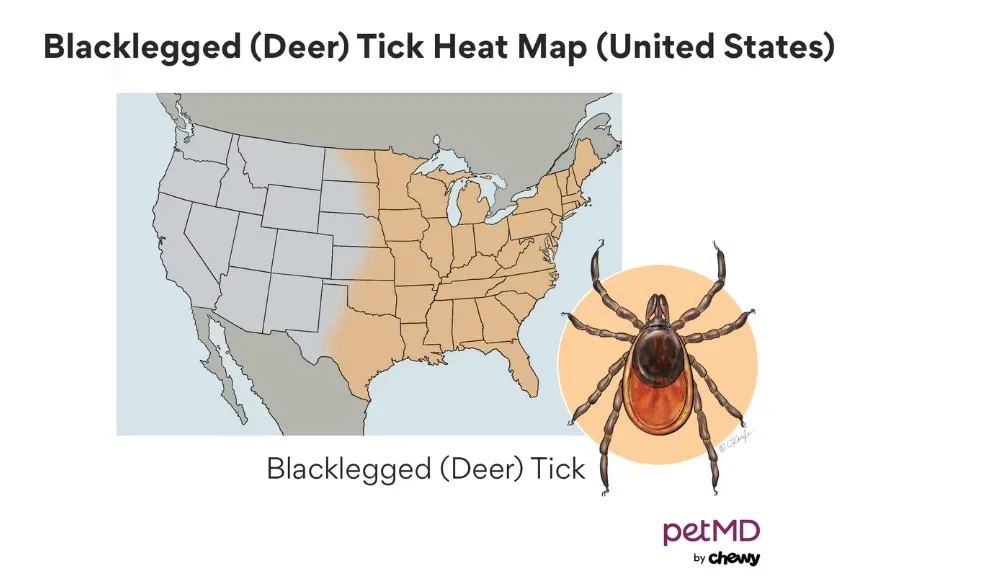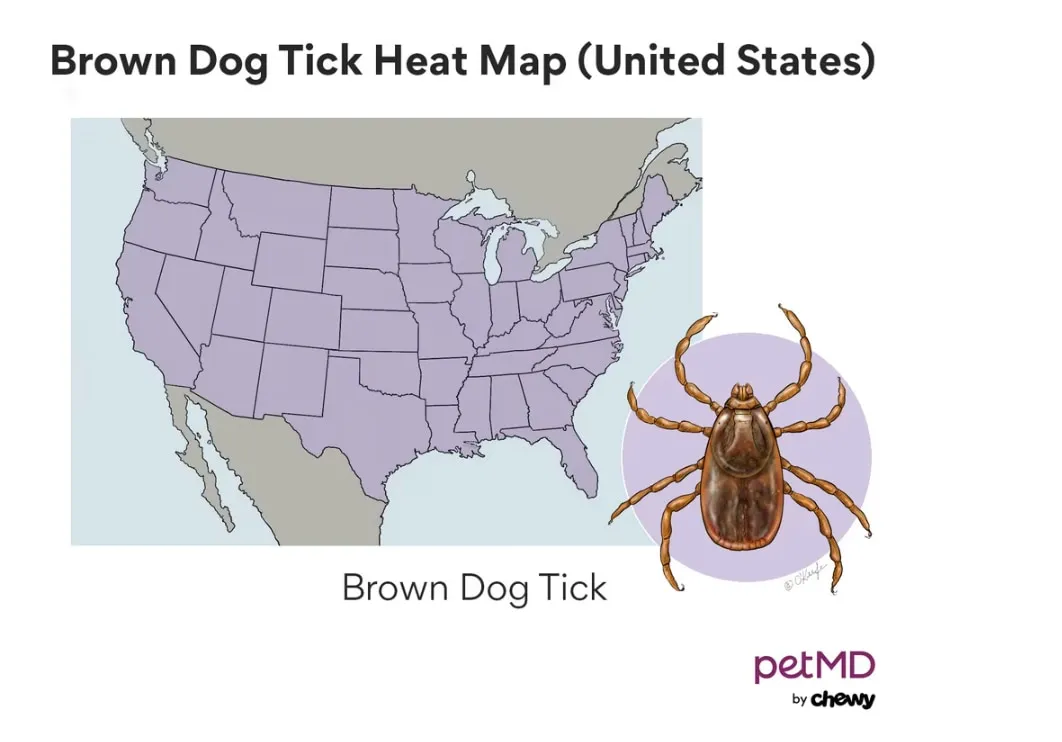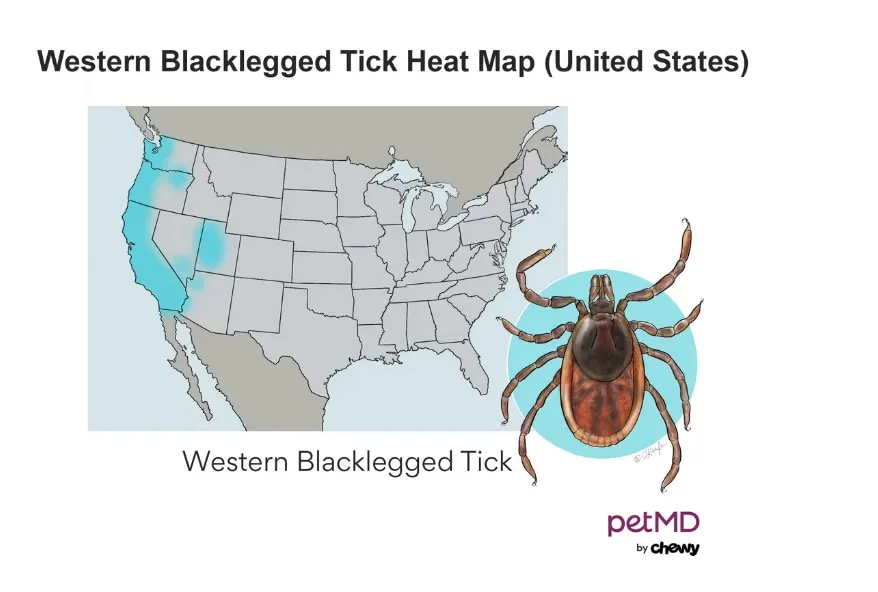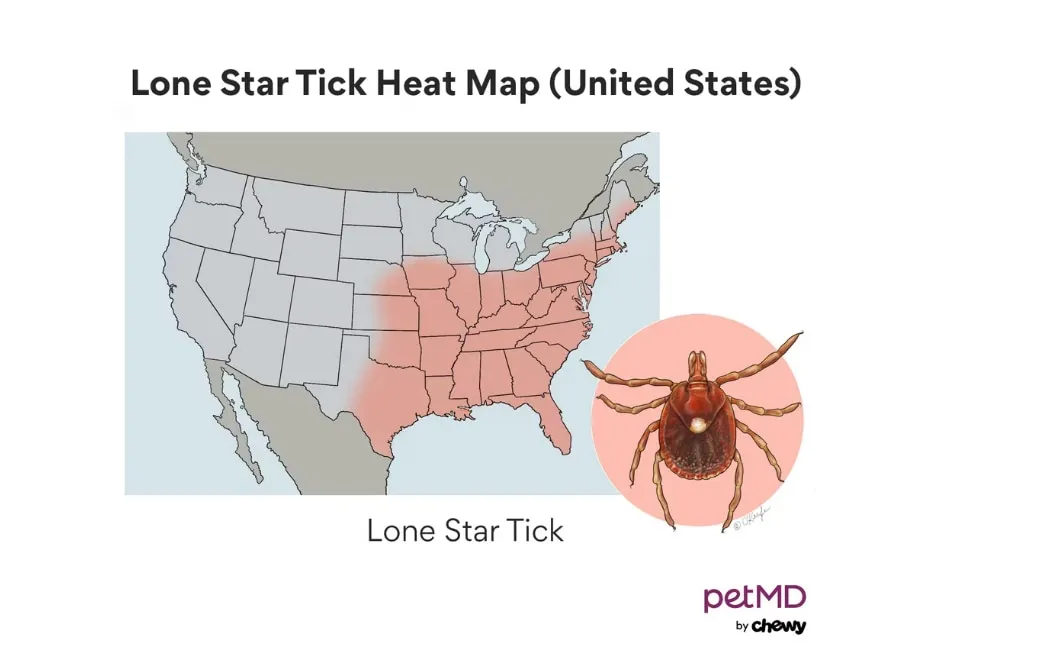Ensuring your dog’s health and happiness is a top priority for any pet parent, and a cornerstone of preventative care involves regular protection against common parasites. Among the most critical aspects of this care is the consistent application of Monthly Flea And Tick Treatment For Dogs. These tiny pests are more than just an annoyance; they pose significant health risks, from irritating bites to life-threatening diseases, making a year-round prevention strategy indispensable for canine well-being. This guide will delve into why a monthly approach is crucial, how to choose the most effective treatments, and what factors you should consider to ensure your furry friend remains safe and healthy.
Why Monthly Flea and Tick Treatment is Essential for Your Dog’s Health
Fleas and ticks are external parasites (ectoparasites) that infest dogs by feeding on their blood. While their presence alone can cause discomfort, the health implications extend far beyond simple irritation. Understanding these risks underscores the importance of a robust monthly prevention plan.
Flea bites can lead to a range of direct health issues for dogs. The saliva injected during a flea bite often triggers severe allergic reactions, commonly known as flea allergy dermatitis (FAD), characterized by intense itching, skin inflammation, and hair loss. In severe infestations, especially in puppies or small dogs, significant blood loss can occur, leading to anemia. Constant scratching from itching can also break the skin, making it vulnerable to secondary bacterial infections.
Ticks, on the other hand, are notorious for transmitting various debilitating diseases. These include:
- Lyme Disease: Caused by the bacterium Borrelia burgdorferi, transmitted by deer ticks. Symptoms include lameness, fever, lethargy, and in severe cases, kidney damage.
- Ehrlichiosis: Transmitted by the brown dog tick, this bacterial disease affects blood cells and can cause fever, lethargy, bruising, and chronic weight loss.
- Anaplasmosis: Spread by deer ticks and brown dog ticks, leading to symptoms like lameness, joint pain, fever, and loss of appetite.
- Rocky Mountain Spotted Fever: A serious bacterial disease transmitted by various tick species, causing fever, joint pain, swelling, neurological issues, and even death.
- Babesiosis: Caused by microscopic parasites transmitted by certain ticks, affecting red blood cells and leading to anemia, weakness, and jaundice.
- Tick Paralysis: Caused by neurotoxins in the saliva of some ticks, leading to progressive muscle weakness and potentially respiratory failure.
The danger of these parasites isn’t confined to your dog; some tick-borne diseases, like Lyme disease and Rocky Mountain Spotted Fever, are zoonotic, meaning they can spread from animals to humans. This interconnected risk highlights why effective monthly flea and tick treatment for dogs is not just about pet health, but also about safeguarding your entire household.
When to Start and Maintain Monthly Flea and Tick Treatment
Fleas and ticks are incredibly resilient and can thrive in diverse environments and climates, not just during warmer months. This persistence means that dogs are at risk year-round, regardless of geographical location. Therefore, veterinary professionals universally recommend starting flea and tick prevention early and maintaining it consistently throughout a dog’s life.
Ideally, puppies should begin their monthly flea and tick treatment as early as 8 weeks of age, provided the specific product label permits. It is crucial to consult your veterinarian to determine the appropriate age and weight for initiating treatment for your puppy, as product formulations vary. Once started, this preventative regimen should continue without interruption, twelve months a year. Even in colder climates where parasite activity may seem to diminish, fleas and ticks can survive indoors or in sheltered outdoor areas, ready to infest your pet. Consistent year-round protection ensures there are no gaps in coverage, offering continuous peace of mind and defense against these persistent pests.
Choosing the Right Monthly Flea and Tick Combination Treatment for Dogs
The market offers a wide array of products designed to protect your dog from fleas and ticks, ranging from pesticides that kill existing parasites to repellents that deter them, and growth inhibitors that disrupt their life cycle. While some products target only one type of parasite, a comprehensive approach often involves a combination flea and tick prevention for dogs that uses multiple active ingredients to tackle a broader spectrum of pests. These advanced options may also provide additional protection against heartworms, various mites (skin and ear), and intestinal parasites. For instance, some broad-spectrum treatments like Credelio Quattro offer protection against fleas, ticks, heartworms, roundworms, hookworms, and tapeworms.
Before settling on any monthly flea and tick treatment for dogs, it is paramount to consult your veterinarian. They can help you navigate the options and ensure the chosen product is the best fit for your specific dog. When discussing potential treatments, you and your vet should review the product label and consider several critical factors:
- Species-Specific Product: Confirm the product is formulated specifically for dogs, not cats, as some ingredients toxic to cats may be present.
- Correct Weight Range: Ensure the dosage aligns with your dog’s current weight to guarantee effectiveness and safety.
- Appropriate Parasite Coverage: Verify that the product protects against the specific fleas and ticks prevalent in your area, and any other parasites your dog is at risk for.
- Administration Guidelines: Understand if the product needs to be given with food, and note the recommended frequency of administration (e.g., monthly, quarterly).
- Onset of Action: Know how long it takes for the product to start working effectively after application.
- Post-Application Care: If topical, understand bathing restrictions after application.
- Safety Profile: Discuss any potential safety concerns or common side effects.
- Adverse Reaction Protocol: Be aware of what steps to take if your dog experiences an adverse reaction.
Beyond these fundamental checks, several other factors can influence the choice of the ideal monthly flea and tick treatment for dogs.
Application Methods: Oral vs. Topical
Monthly flea and tick preventatives typically come in two main forms:
- Oral Treatments: These are chewable tablets that your dog ingests, often flavored to be palatable. Oral flea and tick medications are convenient for many pet parents, as they can be administered like a treat. They are generally unaffected by bathing or swimming, offering consistent protection. However, it’s important to monitor your dog to ensure they consume the entire tablet and do not vomit it before it can be absorbed. This type of chewable flea and tick meds for dogs can be an excellent choice for dogs who dislike topical applications.
- Topical Treatments: These are liquid solutions applied directly to your dog’s skin, usually between the shoulder blades or down the back. Topical preventatives are a good option for dogs who are picky eaters or have sensitive stomachs. However, they require careful handling to prevent contact with small children or other pets before the product dries completely, as some can be toxic if ingested. They may also be less effective for dogs who swim frequently or require regular baths, as water can diminish their efficacy.
Geographical Considerations and Local Parasite Risks
The prevalence and types of parasites vary significantly by geographic location. Different regions harbor different local parasite populations, including various species of fleas and ticks, and consequently, different tick-borne diseases.
The Companion Animal Parasite Council (CAPC) is an invaluable resource that provides detailed prevalence maps and forecasts for parasites in your area. Consulting CAPC data can help you and your veterinarian select a monthly flea and tick treatment for dogs that specifically targets the most prevalent threats in your region, ensuring comprehensive protection. Understanding these local risks is key to choosing the most effective best treatment to prevent ticks on dogs for your pet.
 Regional map displaying prevalence of American Dog Ticks, highlighting areas of higher risk for dogs and the need for specific monthly treatments.
Regional map displaying prevalence of American Dog Ticks, highlighting areas of higher risk for dogs and the need for specific monthly treatments.
For example, regions with dense wooded areas might have a higher incidence of deer ticks, which transmit Lyme disease, while other areas might contend more with Lone Star ticks, known for spreading Ehrlichiosis.
 Map indicating the geographical distribution of Lone Star ticks, showing concentrated areas where dogs require robust monthly parasite prevention.
Map indicating the geographical distribution of Lone Star ticks, showing concentrated areas where dogs require robust monthly parasite prevention.
Knowing which specific tick species are active in your vicinity allows for a more targeted and effective prevention strategy.
Outdoor Exposure and Lifestyle Factors
Your dog’s access to outdoor environments and the types of activities they engage in significantly influence their risk of parasite exposure. Dogs that frequent dog parks, hiking trails, wooded areas, or even just spend a lot of time in overgrown backyards are at a higher risk of encountering fleas and ticks. These environments are prime habitats for parasites.
Even if your dog is primarily an indoor pet, comprehensive monthly flea and tick treatment for dogs is still recommended. Fleas can easily enter your home through window screens, on other household pets that venture outside, or even hitch a ride on your clothing or shoes. Ticks, though less mobile, can also be brought inside unintentionally. Therefore, veterinarians generally advise year-round prevention for all dogs, regardless of their indoor or outdoor activity levels.
Genetic Predispositions: Understanding the MDR-1 Gene
Certain dog breeds, such as Collies, Australian Shepherds, and Shetland Sheepdogs, may carry a specific genetic mutation known as MDR-1 (Multidrug Resistance 1). This mutation can make it more difficult for their bodies to break down certain medications, including some flea and tick preventatives, potentially leading to adverse reactions.
Many veterinarians recommend testing dogs from affected breeds for the MDR-1 gene. While this mutation is a concern, numerous manufacturers of modern parasite preventatives have conducted safety tests on dogs with the MDR-1 mutation and found their products to have no adverse effects. Always inform your veterinarian about your dog’s breed and any known genetic predispositions to ensure the safest treatment choice.
Dog’s Life Stage and Weight
A dog’s life stage—whether they are a puppy, an adult, or a senior—and their body weight are crucial considerations when selecting a monthly flea and tick treatment for dogs. Most preventatives have specific minimum age and weight requirements to ensure safety and efficacy. For instance, many products are safe for puppies from 8 weeks of age, but some specialized formulations, like Revolution Topical Solution for Kittens and Puppies, can be used as early as 6 weeks.
It’s vital to choose a product that corresponds to your dog’s current weight category. Using a dosage that is too low may render the treatment ineffective, while a dose that is too high can increase the risk of side effects. Regular weight checks at your vet’s office can help ensure your dog is always on the correct dosage as they grow or if their weight fluctuates.
Existing Medical Conditions
A dog’s medical history plays a significant role in determining the most suitable monthly flea and tick treatment. Certain classes of preventatives, particularly those in the isoxazoline class (e.g., Bravecto, Credelio, Nexgard, Simparica Trio), should be used with extreme caution in dogs with a history of seizures, epilepsy, or other neurological diseases. These medications may potentially lower the seizure threshold in susceptible individuals.
Furthermore, no preventative should be administered without a thorough discussion with your veterinarian if:
- Your dog has previously experienced an allergic reaction to any medication.
- Your dog is currently sick, debilitated, or significantly underweight.
- Your dog is pregnant, nursing, or planned for breeding in the near future.
Your veterinarian can assess these conditions and recommend a safe and effective alternative to protect your dog.
Over-the-Counter vs. Prescription Monthly Flea and Tick Options
When considering options for monthly flea and tick treatment for dogs, you’ll encounter both over-the-counter (OTC) and prescription products. Understanding the differences is important for making an informed decision.
Over-the-Counter Flea and Tick Products
OTC flea and tick preventatives are readily available online, at pet supply stores, and various retail outlets without the need for a veterinary prescription. While these products offer convenience and often a lower price point, it’s crucial to exercise caution. Not all OTC products are created equal in terms of efficacy or safety. Some older formulations may contain ingredients that pests have developed resistance to, making them less effective. If you opt for an OTC monthly flea and tick treatment for dogs, always check in with your veterinarian first to ensure it’s a safe and appropriate choice for your specific pet’s needs and health status.
Prescription Flea and Tick Products
Prescription flea and tick preventatives require authorization from your veterinarian. These products are typically more potent, scientifically advanced, and undergo rigorous testing for safety and effectiveness. While they may carry a slightly higher cost than many OTC options, veterinarians often recommend them due to their superior performance and established safety profiles. The requirement for a prescription ensures that a veterinary professional has assessed your dog’s health and individual risk factors, tailoring the best possible protection. Many prescription flea tick meds for dogs also offer broader protection against other parasites, including heartworms, which is a significant advantage.
Popular Monthly Flea and Tick Treatment Products for Dogs
The market offers a range of highly effective products for monthly flea and tick treatment for dogs. Here’s an overview of some popular options, highlighting their active ingredients, target parasites, and key considerations:
Advantage II
Advantage II is a topical monthly product designed to combat fleas and chewing lice. It contains imidacloprid, which rapidly kills adult fleas, and pyriproxyfen, an insect growth regulator that prevents flea eggs and larvae from developing. This combination is fast-acting, typically killing fleas within hours. It’s crucial to note that Advantage II does not provide tick prevention. It is approved for dogs and puppies aged 7 weeks and older, weighing at least 3 pounds.
Advantage Multi
Advantage Multi is a topical monthly solution offering broader protection. Its active ingredients, imidacloprid and moxidectin, provide comprehensive treatment for fleas, sarcoptic mange, and various intestinal parasites including hookworms, roundworms, and whipworms. Crucially, it also prevents heartworm disease. While it rapidly kills fleas, other parasites may take up to 24 hours. Like Advantage II, this product does not offer tick prevention. It is suitable for dogs and puppies 7 weeks and older, weighing over 3 pounds.
Bravecto
Bravecto is available as a chewable tablet or a topical solution. Its active ingredient, fluralaner, belongs to the isoxazoline class. Bravecto is highly effective against fleas and ticks, starting to kill fleas within two hours and ticks within 12 hours. Unlike most products listed here, Bravecto typically provides protection for up to 12 weeks (3 months) rather than just one month, making it a quarterly treatment option. It has also shown efficacy against demodectic, sarcoptic mange, and ear mites. Due to its isoxazoline component, it should be used with caution in dogs with a history of seizures, epilepsy, or other neurological disorders.
Comfortis
Comfortis is a chewable tablet containing spinosad as its active ingredient. This product specifically targets and kills fleas, with a rapid onset of action within 30 minutes of administration. It is a monthly treatment, generally administered once every month. Comfortis is approved for dogs and puppies 14 weeks or older and weighing over 5 pounds. It does not provide protection against ticks.
Credelio
Credelio is a chewable tablet that provides monthly protection against fleas and ticks. Its active ingredient, lotilaner, is also an isoxazoline. Credelio acts quickly, beginning to kill fleas within four hours of administration. This monthly treatment is suitable for dogs and puppies 8 weeks and older, weighing more than 4.4 pounds. As with other isoxazoline drugs, caution is advised for dogs with a history of seizures, epilepsy, or neurological disorders.
Credelio Quattro
Credelio Quattro is an advanced chewable tablet administered monthly, offering broad-spectrum protection. It combines lotilaner (for fleas and ticks) with moxidectin (for heartworms, hookworms, and roundworms), praziquantel (for tapeworms), and pyrantel (for hookworms and roundworms). This comprehensive formula makes it one of the broadest-spectrum monthly preventatives available. It is approved for dogs and puppies 8 weeks and older who weigh at least 3.3 pounds. Like Credelio, it requires caution in dogs with a history of neurological issues due to the lotilaner content.
Frontline Gold
Frontline Gold is a topical monthly product that kills fleas, ticks, and chewing lice. It combines fipronil, (s)-methoprene, and pyriproxyfen. This fast-acting formula works within hours to eliminate parasites. It is suitable for dogs and puppies over 8 weeks old and weighing more than 5 pounds.
Frontline Plus
Frontline Plus is another topical monthly product, featuring fipronil and (s)-methoprene. It is effective against fleas, ticks, and chewing lice. While fast-acting, its onset may be slightly slower than Frontline Gold. It is approved for dogs and puppies 8 weeks and older, weighing more than 5 pounds.
Frontline Shield
Frontline Shield is a topical monthly product providing broad protection and repellency. Its active ingredients, fipronil, permethrin, and pyriproxyfen, kill fleas, ticks, chewing lice, and stable flies. It also repels mosquitoes, stable flies, and ticks. Frontline Shield begins killing fleas in five minutes and ticks within one hour. It is for dogs and puppies 9 weeks and older, weighing more than 5 pounds. A critical warning: This product is highly toxic to cats. Extreme caution or avoidance is necessary in households with cats.
K9 Advantix II
K9 Advantix II is a topical monthly treatment that repels and kills fleas, ticks, mosquitoes, and chewing lice, and also repels biting flies. It contains imidacloprid, permethrin, and pyriproxyfen. This fast-acting product starts killing parasites within hours. It is approved for dogs and puppies over 7 weeks old and weighing more than 4 pounds. Important safety note: K9 Advantix II is highly toxic to cats and should not be used in households with feline companions.
Nexgard
Nexgard is a chewable tablet that offers monthly protection against fleas and several types of ticks, including deer ticks, American dog ticks, brown dog ticks, and Lone Star ticks. Its active ingredient, afoxolaner, is an isoxazoline. Nexgard starts killing fleas within four hours and ticks within 48 hours. It is also used extra-label for the treatment of sarcoptic and demodectic mange. This monthly product is for dogs and puppies 8 weeks old and older, weighing more than 4 pounds. As with other isoxazolines, use with caution in dogs with a history of seizures or neurological disorders.
Onguard Plus
Onguard Plus is a topical monthly product combining fipronil and (s)-methoprene. This formulation effectively kills fleas, ticks, sarcoptic mange, and chewing lice. It is approved for dogs and puppies over 8 weeks old and weighing more than 5 pounds.
Seresto
Seresto is a unique option in flea and tick prevention, functioning as a collar rather than a monthly application. It contains imidacloprid and flumethrin, which are slowly released to kill and repel fleas and ticks for up to eight months. Fleas are typically killed within 24 hours of application and ticks within 48 hours. If a dog bathes or swims frequently (more than once per month), the collar’s efficacy might decrease, potentially requiring replacement every five months. It is suitable for dogs and puppies over 7 weeks of age. While not a “monthly” application in the traditional sense, its long-lasting protection provides continuous coverage that many pet owners appreciate.
 Map depicting the geographic spread of brown dog ticks, illustrating regions where robust monthly flea and tick prevention is vital for canine health.
Map depicting the geographic spread of brown dog ticks, illustrating regions where robust monthly flea and tick prevention is vital for canine health.
This diverse range of products ensures that pet owners have options to find the most suitable and effective monthly flea and tick treatment for dogs, taking into account their pet’s specific needs, lifestyle, and local parasite risks.
 Overview map showcasing areas with high incidence of Lyme disease transmitted by deer ticks, emphasizing the necessity of consistent monthly parasite control.
Overview map showcasing areas with high incidence of Lyme disease transmitted by deer ticks, emphasizing the necessity of consistent monthly parasite control.
Simparica Trio
Simparica Trio is a chewable tablet offering comprehensive monthly protection. Its active ingredients are sarolaner (an isoxazoline), moxidectin, and pyrantel. This combination treats fleas, ticks, roundworms, and hookworms, and importantly, prevents heartworm disease. It’s also used extra-label to treat demodectic mange, sarcoptic mange, and ear mites. Simparica Trio starts killing fleas and ticks within 12 hours. This product is for dogs and puppies 8 weeks old and older, weighing more than 2.8 pounds. Due to sarolaner, caution is advised for dogs with a history of seizures, epilepsy, or neurological disorders. This makes it a highly effective monthly heartworm medicine for dogs combined with flea and tick control.
Trifexis
Trifexis is a chewable tablet providing monthly protection against fleas, hookworms, roundworms, and whipworms, as well as preventing heartworm disease. Its active ingredients are spinosad and milbemycin oxime. It is a fast-acting drug, beginning to kill fleas within 30 minutes. However, Trifexis does not provide protection from ticks. It is approved for dogs and puppies 8 weeks or older and weighing over 5 pounds.
Vectra 3D
Vectra 3D is a topical monthly product known for its broad repellent and killing action against fleas, ticks, mosquitoes, chewing lice, sand flies, biting flies, and some mites. Its active ingredients include dinotefuran, permethrin, and pyriproxyfen. Vectra 3D begins killing parasites within hours. This product is for dogs and puppies 8 weeks old and older, weighing more than 5 pounds. As with Frontline Shield and K9 Advantix II, Vectra 3D is highly toxic to cats, requiring extreme caution or avoidance in multi-pet households.
Conclusion
The health risks posed by fleas and ticks are too significant to overlook, making consistent, year-round monthly flea and tick treatment for dogs an indispensable part of responsible pet care. From preventing itchy skin conditions and anemia to guarding against serious, sometimes fatal, tick-borne diseases, a proactive approach offers the best defense for your canine companion.
Choosing the right preventative requires careful consideration of your dog’s age, weight, health status, lifestyle, and the specific parasite threats in your geographic area. Always consult with your veterinarian to select a product that is safe, effective, and tailored to your dog’s individual needs. By committing to a regular monthly prevention regimen, you are not only protecting your beloved pet but also contributing to the health and safety of your entire family. Stay vigilant, stay informed, and give your dog the continuous protection they deserve.
References
- PetMD. “Best Flea & Tick Medications for Dogs.” PetMD, https://www.petmd.com/dog/vet-verified/best-flea-tick-medications-for-dogs. Accessed [Current Date].
- PetMD. “Dog Parent Guide to Flea and Tick Season.” PetMD, https://image.petmd.com/files/2025-09/PetMD%20ENG%20Version%20-%20Dog%20Parent%20Guide%20to%20Flea%20and%20Tick%20Season%20.pdf?VersionId=f4FjVulvzvA_UqLtk6DU4_5GiGl.a1Ce. Accessed [Current Date].
- Companion Animal Parasite Council (CAPC). capcvet.org. Accessed [Current Date].
- Jones, Lauren, VMD. “Flea and Tick Prevention and Treatment for Dogs.” PetMD, https://www.petmd.com/dog/general-health/flea-and-tick-prevention-and-treatment-dogs. Accessed [Current Date].
